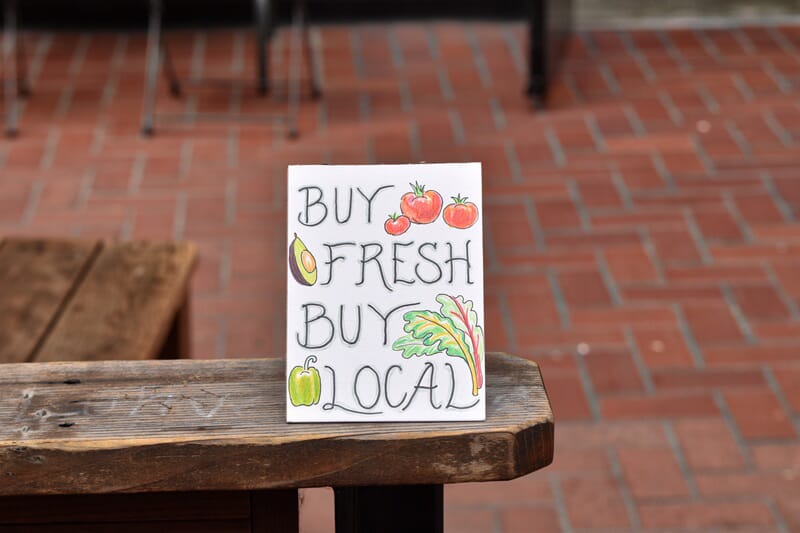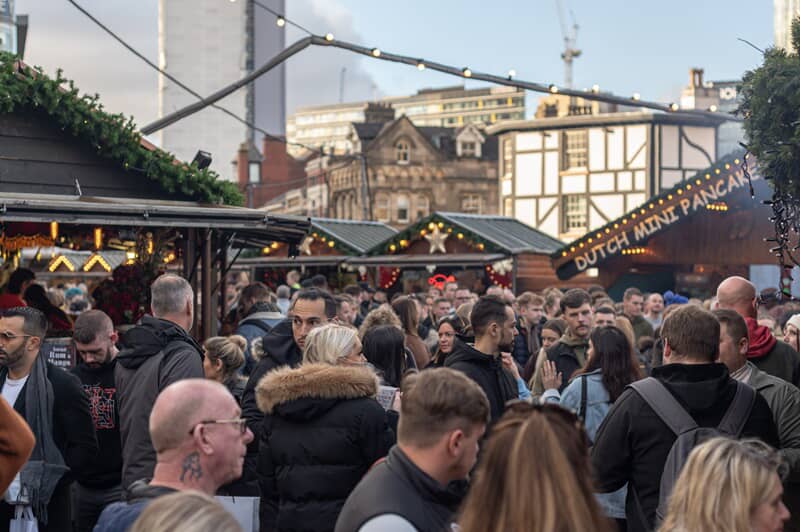
The days of one-size-fits-all marketing are rapidly disappearing. Today's most successful businesses understand that effective communication requires speaking directly to the specific communities where they operate. Hyperlocal marketing involves narrowing your focus down to a granular level to reach these potential audiences.
This precision approach extends powerfully into physical signage, where your business can create visual communications that resonate with your local community. Rather than generic messaging that could apply anywhere, hyperlocal signage demonstrates genuine understanding of local culture, concerns and aspirations.
The Power of Postcode-Level Precision
Modern hyperlocal marketing recognises that targeting the one or two miles around your physical business allows your prospective customers to find you. This geographic precision becomes even more powerful when applied to physical signage, where local references and community-specific messaging can create immediate connection with passersby.
The effectiveness of hyperlocal approaches stems from their ability to cut through the noise of generic advertising. When someone sees signage that references their local landmarks or community, it creates an immediate sense of relevance and authenticity that broader messaging cannot achieve.
Digital tools now enable businesses to gather unprecedented insights about their immediate surroundings. Local demographic data, spending patterns, foot traffic analytics and social media conversations provide valuable intelligence for informing signage decisions. This data-driven approach to hyperlocal signage ensures messaging resonates with actual community characteristics rather than just your assumptions about it.
Data-Driven Localisation Strategies
Effective hyperlocal signage begins with comprehensive local market research. This involves analysing multiple data streams to understand the unique characteristics of your immediate trading area:
- Demographic Intelligence provides the foundation for hyperlocal messaging. Local census data reveals age distributions, household compositions, income levels and ethnic diversity within specific postcode areas. This information directly informs language choices, image selection and cultural references that will resonate with local audiences.
- Behavioural Pattern Analysis examines how people move through and use local spaces. Foot traffic patterns, popular local destinations, commuting routes and shopping behaviours all influence optimal signage placement and messaging timing. Understanding when your neighbourhood is busiest helps determine whether to focus on morning commuters, lunchtime visitors or on people out for an evening’s entertainment.
- Local Conversation Monitoring through social media analysis reveals what matters to your immediate community. Local Facebook groups or apps like Nextdoor and location-tagged social media posts provide insights into the current interests, celebrations or priorities of your customers and can inform timely signage messaging.
- Competitive Landscape Mapping identifies what other businesses in your immediate area are communicating and how your signage can differentiate your business while remaining complementary to the local ecosystem.
Language and Cultural Localisation
One of the most powerful aspects of hyperlocal signage is its ability to incorporate local language patterns and cultural references that create immediate familiarity and connection.
Regional Terminology varies significantly even within the same city. Subtle language choices signal local knowledge and create immediate connection with residents who recognise authentic local usage.
Local Landmark References provide geographical context that resonates with residents while potentially confusing outsiders – which may be exactly the point. A café sign reading "Just around the corner from the old cinema" speaks directly to long-term residents while creating curiosity among more recent arrivals.
Community History Integration acknowledges the area's heritage and demonstrates long-term commitment to the neighbourhood. Signage that references local historical events, former land uses or community milestones shows respect for local identity beyond simple commercial interests.
Seasonal Local Connections link messaging to community-specific seasonal patterns. A business near a school might adjust messaging around term times, while one near a park might reference seasonal activities specific to that location.
Community Event Integration
Successful hyperlocal signage evolves with the rhythm of local life, acknowledging and participating in community events and celebrations.
Local Festival Participation shows community spirit while driving relevant traffic. Signage that references the annual summer fair, Christmas market or charity fun run demonstrates ongoing engagement with local life beyond simple business transactions.
Sports Team Affiliations create powerful local connections, particularly in communities with strong local team loyalties. However, this requires careful consideration of potentially rancorous divisions – especially when you want to keep your “City” properly “United”.
Seasonal Community Activities provide regular opportunities for relevant messaging updates. Recognition of local gardening competitions, charity fundraising events or community clean-up days shows active participation in local life.

Local Government and Council Initiatives offer opportunities to demonstrate civic engagement. Showing support for local environmental initiatives, traffic safety campaigns or community improvement projects through signage demonstrates tangible commitment to your community.
Local Infrastructure Challenges such as construction disruptions or utility works can be addressed through helpful signage that demonstrates local knowledge and customer consideration.
Technology-Enabled Hyperlocal Signage
Modern technology enables dynamic hyperlocal signage that can adapt to real-time local conditions and events.
Location-Based Content Management allows signage to automatically adjust based on local data feeds. Weather conditions, local event schedules, traffic patterns and community events can all trigger relevant content updates without manual intervention.
Geofenced Social Media Integration can display real-time local social media content, community announcements or user-generated content that reinforces local connection and demonstrates community engagement.
Local Data Feed Integration incorporates live information about local transport, events, weather or community news into signage displays, providing genuine local utility beyond directly marketing your business.
Building Local Partnerships Through Signage
Hyperlocal signage provides opportunities for community collaboration that strengthen local business relationships while providing mutual benefit.

Cross-Promotional Opportunities with neighbouring businesses can create signage that serves multiple local enterprises while providing comprehensive local information to residents and visitors.
Community Organisation Partnerships allow businesses to provide signage space for local charity information, community events or public service announcements, building goodwill while demonstrating community commitment.
Local Authority Collaboration can involve providing space for community information, safety messages or announcements that serve public needs while demonstrating good citizenship.
Resident Contribution Programs might invite local input on signage content, community priorities or local information that would be helpful to display, creating ongoing community engagement.
Measuring Hyperlocal Signage Success
The effectiveness of hyperlocal signage can be measured through several community-specific metrics:
- Local Recognition and Recall can be assessed through community surveys that measure awareness of local references and appreciation of neighbourhood-specific messaging.
- Community Engagement Levels might be tracked through social media mentions, local review site comments or direct community feedback that specifically references local connections.
- Foot Traffic Analysis can correlate signage changes with visitor patterns, helping identify which hyperlocal elements drive the strongest response from local residents versus broader audiences.
- Local Market Share Growth within the specific postcode area provides the ultimate measure of whether hyperlocal signage is building stronger community connections that translate into concrete success for your business.
Avoiding Hyperlocalisation Pitfalls
While hyperlocal signage offers real benefits, several common mistakes can undermine its effectiveness:
- Over-Localisation can make messaging too insular, potentially alienating visitors or new residents who don't understand local references.
- Cultural Insensitivity can occur when businesses make assumptions about local culture without genuine understanding, leading to messaging that feels patronising or inauthentic.
- Outdated References quickly make signage feel irrelevant if local situations change faster than your signage updates.
- Divisive Positioning can occur when taking sides on local controversies or making assumptions that everyone in the local community shares your own hot takes.
The Future of Hyperlocal Signage
As location-based technology continues advancing, hyperlocal signage will become increasingly sophisticated and responsive. Artificial intelligence and machine learning will enable signage that learns from local interactions and continuously refines its community relevance.
The businesses that master hyperlocal signage will be those who build deeper community roots, stronger customer loyalty and more authentic local presence than competitors relying on generic messaging. In an increasingly digital world, the physical presence that speaks fluent "local community" becomes a powerful competitive advantage.
We at FASTSIGNS Manchester pride ourselves on being the leading local advocates for professional, impactful signage. If your business would benefit from mining the depths of our local knowledge in signage design and installation, get in touch with us today!